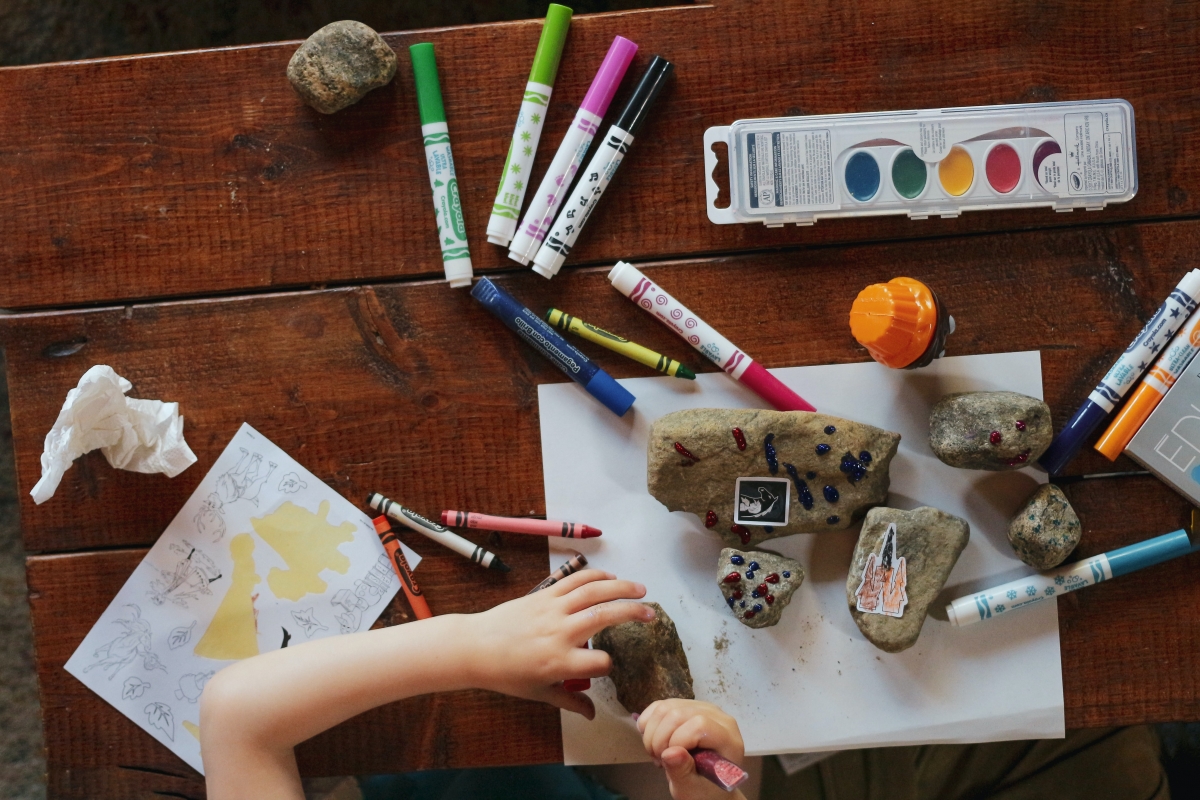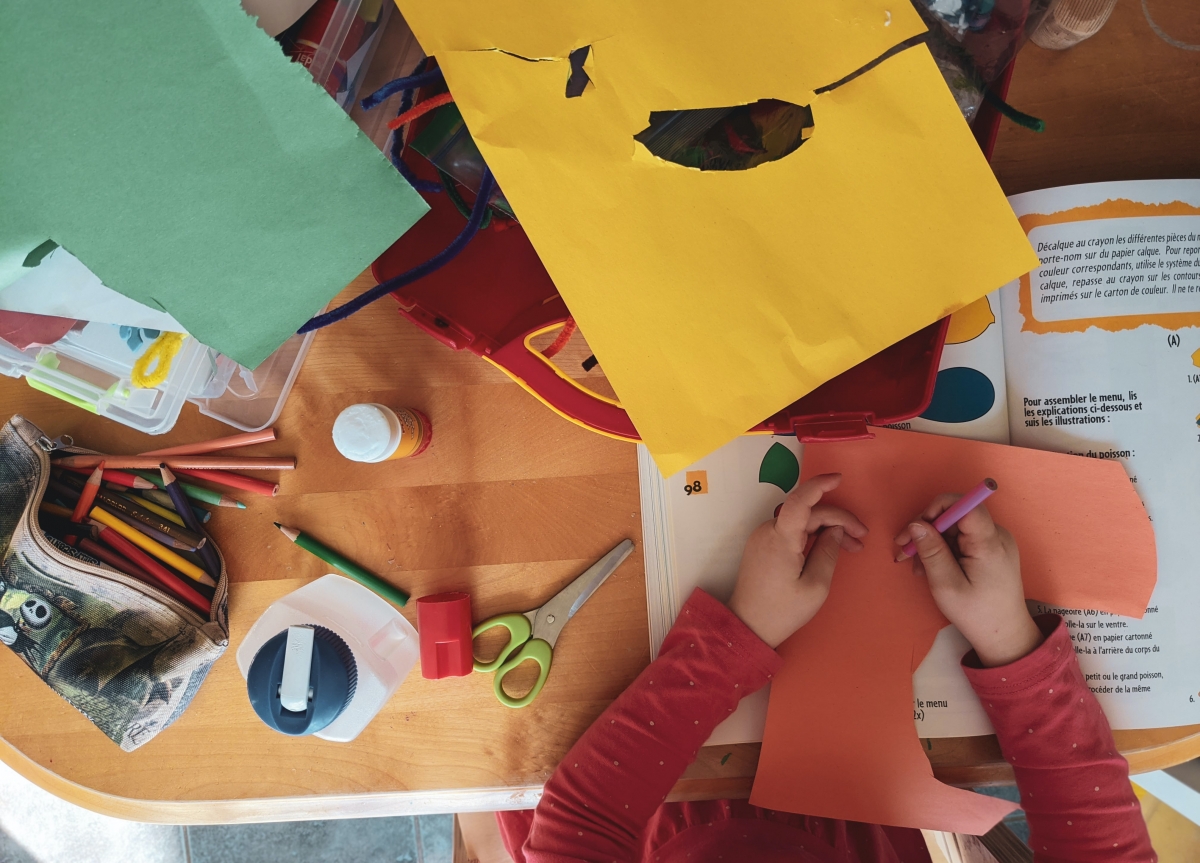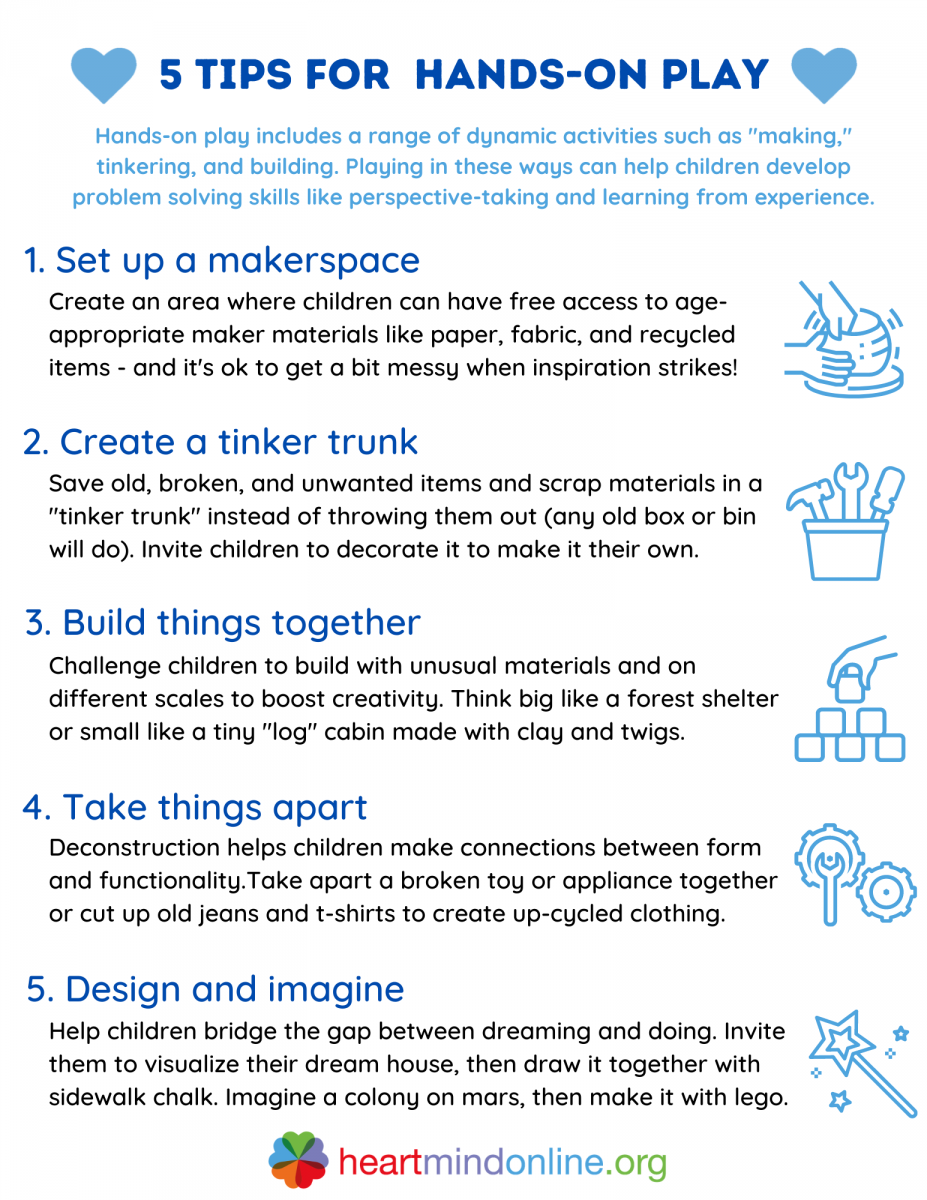
Play is one of children's greatest teachers. Children learn many of the social and emotional skills they need to thrive through play.
According to neuroscientist Dr. Shimi Kang, play is essential for developing adaptability and resilience in humans and animals alike. Certain types of hands-on play, such as making and tinkering, are especially beneficial for building problem solving skills. Essential problem solving skills for children include seeing things from another's perspective, understanding the impact of one's words and actions, and creating fair solutions that don't hurt anyone.
Hands-on play is a core value of the Maker Movement, a global learning revolution that nurtures curiousity and inventiveness through "making". Making is a type of play that involves creative, hands-on activities such as building, crafting, and tinkering.
Making is playful, curious, and often seeks to solve real-life problems in innovative ways. Tinkering can be thought of as "thinking with your hands," and involves a mix of experimenting and exploring, such as through taking an appliance apart and reassembling it or using the pieces for art.
Making and other forms of hands-on play can help children develop new ways of thinking, become more confident and resourceful, make connections between new and familiar things, and improve their ability to integrate ideas and experiences. These abilities are all part of the Solves Problems Peacefully Heart-Mind Quality.
Introducing hands-on play takes some effort, but becomes easy once you've established a dedicated space and set appropriate materials aside. Hands-on play is even more beneficial when adults enthusiastically participate alongside children. Read on to learn five tips for supporting hands-on play in primary-school aged children.

5 Tips for Supporting Hands-On Play
Download the infographic here: 
1. Set up a makerspace. Create an area where children can have free access to age-appropriate maker materials. Pick a space where it will be ok to get a bit messy and where children can leave projects half-finished. You never know when inspiration will strike!
2. Create a tinker trunk. Save old, broken, and unwanted items and scraps of paper, fabric, and other materials in a "tinker trunk" instead of throwing them out (any old box or bin will do). Invite children to decorate it with recycled materials to make it their own.
3. Build things together. Challenge children to build with unusual materials and on different scales to boost creativity. Think big: construct a pillow fort, build a forest shelter, or make a paper cup pyramid together. Think small: create a marshmallow and toothpick castle, build a tiny "log" cabin with clay and twigs, or construct a marble run with empty paper towel rolls and tape.
4. Take things apart. Deconstruction helps children make connections between form and functionality, and can inspire inventions and art. Take apart a broken toy or appliance together and use the materials to make something new. Cut up old jeans and t-shirts to create up-cycled clothing and accessories. Smash old plates and cups safely and use the pieces to make a mosaic.
5. Design and imagine. Help children bridge the gap between dreaming and doing. Invite them to visualize their dream house, then draw it together with sidewalk chalk. Draft up plans for a colony on Mars, then build a prototype with lego. Challenge them to draw a geometric maze, then dig it into the sand together at low tide.

From lions to mice, dogs to dolphins, all animals love to play! The more intelligent the species, the more playful they are likely to be. For example, dolphins are extremely playful and also have larger empathy centers in the brain than humans.
A study of sixty-six, 7-year-old primary school students found that children who had greater lego construction ability also performed better in math and had stronger visuospatial memory skills.
Construction play with blocks, lego, play dough, or other materials is linked to